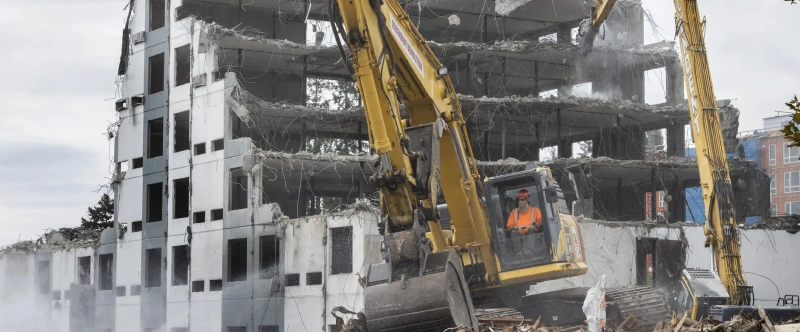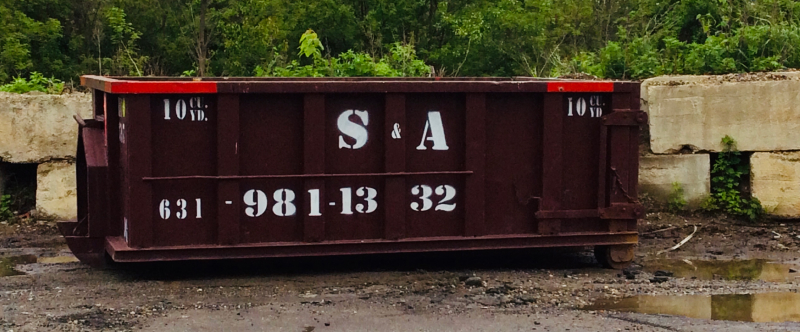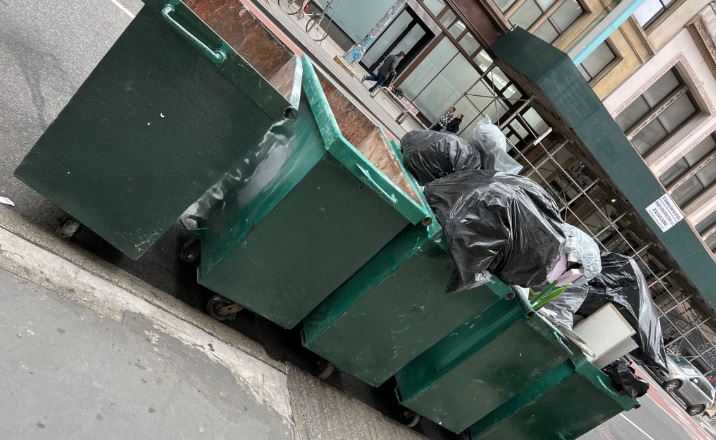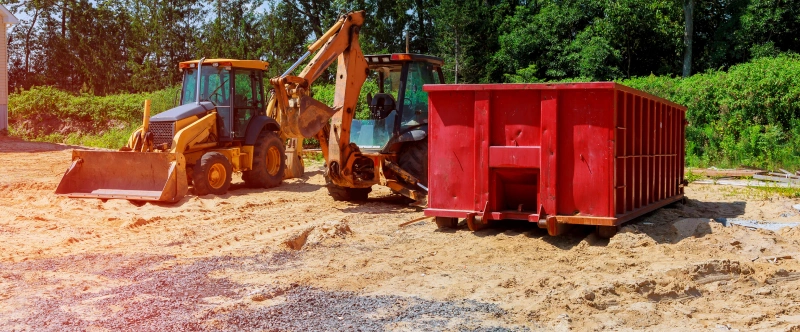The construction and demolition (C&D) industry generates significant amounts of waste, from piles of concrete to stacks of leftover wood and tangled metal. These materials often accumulate in large quantities throughout a project. In the past, the standard approach to managing this waste was simply hauling everything to the nearest landfill. However, today, there are many more sustainable and efficient alternatives available.
So, whether you’re a construction professional wanting to enhance your waste management practices or a concerned citizen interested in the circular economy, here are some construction recycling methods that will help you out. From C&D waste processing to material reuse, these strategies are sure to reduce the environmental impact of construction and demolition projects.
Understanding the C&D Waste Recycling Process
The construction and demolition (C&D) waste recycling process begins at the project site, where proper material sorting and segregation are essential to maximize recycling efficiency. Construction teams are encouraged to separate materials such as asphalt, carpet, clean wood (no paint) concrete, bricks, corrugated cardboard,glass, gypsum board (dry wall) land clearing debris, metals and plastics.
Once sorted at a local nearby Transfer Station or Material Recovery Facility, these materials are transported to specialized recycling centers equipped with modern machinery and technology designed to handle different types of C&D waste.
How Do C&D Debris Handling & Recovery Facilities Manage Waste?
A Construction and Demolition Debris Handling and Recovery Facility (CDDHRF) is specifically designed to manage waste from construction and demolition projects. These facilities use various processing techniques to extract value from waste, reintegrating recycled materials back into the industrial supply chain.
For example, CDDHRFs accept uncontaminated materials like bricks, soil, wood, and concrete from building or renovation projects. These facilities store waste and sort through it to identify materials that can be recycled or reused. By processing these materials, CDDHRFs aim to maximize sustainability by reducing the need for raw materials.
However, certain materials, such as friable asbestos, corrugated container boards, , municipal solid waste, and fuel tanks, are not accepted by CDDHRFs. Before sending your waste, check if it’s permitted at the facility.
C&D Waste Processing Methods
Here are some common methods for recycling C&D waste:
- Concrete Recycling
Concrete is one of the most common types of C&D waste. It can be crushed into small pieces and used as aggregate for new concrete. This recycling method conserves natural resources by reducing the need for virgin aggregates and minimizes the environmental impact of mining and processing raw materials. - Wood Recycling
Wood waste can be repurposed into engineered wood products like particleboard and oriented strand board (OSB). It can also be chipped and used as mulch for landscaping or as fuel for biomass energy generation. By repurposing wood, the construction industry reduces landfill waste and supports a circular economy. - Metal Recycling
High-value metals like steel and aluminum are easily recyclable. C&D recycling facilities use sorting devices and magnets to separate these metals. Recycling metal reduces the need for mining and processing virgin ores, conserving energy and resources. - Plastic Recycling
Plastics from C&D waste are sorted by type and grade. Some plastics can be recycled into new products, while others may be downcycled into items like plastic lumber or used in waste-to-energy incineration. Proper sorting at the job site is crucial for effective plastic recycling. - Asphalt Recycling
Asphalt from construction and demolition projects can be crushed and processed into recycled asphalt pavement (RAP), which can be used to build new roads. This approach conserves natural resources and reduces the carbon footprint of asphalt production.
Innovative Technologies in C&D Waste Recycling
Advancements in technology have improved C&D waste recycling, with innovations such as:
- Advanced Sorting Systems
Automated systems using optical scanners and infrared sensors can accurately detect and separate materials in C&D waste, ensuring better purity in recycled materials. - Robotic Sorting Arms
Robotic sorting arms enhance the efficiency of recycling by quickly identifying and sorting recyclables, reducing the need for manual labor. - Artificial Intelligence (AI) and Machine Learning
AI-powered systems are increasingly being used to optimize recycling processes. Machine learning algorithms analyze data from sensors and cameras to identify materials, detect impurities, and adjust processing in real-time, improving recycling rates and product quality.
Benefits of C&D Waste Recycling
Recycling construction and demolition waste offers several benefits for both the environment and the economy, including:
- Resource Conservation
Recycling reduces the need for virgin materials such as metals, wood, and aggregates, preserving natural resources and minimizing environmental impacts. - Energy Efficiency
Recycling C&D waste consumes less energy than extracting and processing new materials, resulting in energy savings and lower greenhouse gas emissions. - Waste Diversion
Recycling keeps C&D waste out of landfills, easing the burden on waste management infrastructure and extending landfill capacity, particularly in areas with limited space or strict environmental regulations. - Economic Opportunities
The recycling industry creates jobs and stimulates economic growth. Over the past decade, the recycling sector has generated hundreds of thousands of jobs, contributed billions in wages, and provided substantial tax revenue. - Environmental Protection
Recycling C&D waste helps protect the environment by reducing pollution, preventing habitat loss, and minimizing the impact of resource extraction, promoting a more sustainable construction industry.
Challenges and Considerations in C&D Waste Management
While the benefits of C&D waste recycling are clear, there are still challenges to address:
- Contamination
Hazardous materials like asbestos or lead-based paint can contaminate C&D waste, complicating recycling efforts and posing risks to human health. Proper identification and removal of these contaminants are crucial to ensuring safety and maintaining the quality of recycled materials. - Regulatory Compliance
The regulatory landscape governing C&D waste management is complex, requiring continuous monitoring to ensure compliance with waste management protocols and environmental standards. - Financial Considerations
Although recycling offers long-term financial benefits, the initial investment in infrastructure, equipment, and labor can be a barrier. Public-private partnerships, government incentives, and creative financing solutions can help overcome these challenges and encourage wider adoption of recycling practices.
Why Choose S&A Container Service for Construction & Demolition Waste Management?
At Long Island’s S&A Container Service, we understand the importance of proper construction and demolition waste management. That’s why we offer a range of services to help our clients responsibly dispose of their C&D waste while adhering to all regulatory standards. Before taking the waste directly to landfills, we carry it to a transfer station, where the dumpsters are emptied, and the waste is sorted out. During the sorting process, we separate recyclable materials from non-recyclables to ensure that as much waste as possible is diverted from landfills.
In addition to our sustainable waste management practices, we also offer competitive pricing and excellent customer service. By choosing S&A Container Service, you can trust that your construction and demolition waste will be handled responsibly and in an environmentally friendly manner.
Conclusion
Recycling construction and demolition (C&D) waste is essential for creating a sustainable built environment. By efficiently sorting, processing, and reusing materials, we can significantly reduce the environmental impact of construction activities and conserve vital resources for future generations. Through the adoption of modern technologies, active stakeholder participation, and overcoming regulatory challenges, we can unlock the full potential of C&D waste recycling and lay the groundwork for a more sustainable and eco-friendly future.
FAQs
What is Construction and Demolition (C&D) Waste?
C&D waste refers to the materials generated during construction, remodeling, and demolition projects. These materials typically include asphalt, metals, plastics, wood, concrete, and more.
How does S&A Container support construction waste recycling?
S&A Container Service partners with Transfer Stations and Material Recovery Facilities to improve the management of construction and demolition waste. We help our clients minimize landfill waste and maximize recycling efforts by providing reliable dumpster rental services, promoting sustainable construction practices.
What are the benefits of recycling construction and demolition waste?
Recycling C&D waste offers numerous benefits, including resource conservation, reduced energy use, diverting waste from landfills, job creation, and environmental protection. By recycling these materials, we decrease the demand for virgin resources, save energy, reduce pollution, and contribute to a more sustainable construction industry.
What challenges are involved in recycling C&D waste?
Challenges in recycling C&D waste include contamination of waste streams, fluctuating market demand for recovered materials, economic factors, and compliance with environmental regulations. Overcoming these hurdles requires collaboration between stakeholders, investment in technology and infrastructure, and adherence to regulatory standards.



